Truth Finder
FULL MEMBER

- Joined
- Jun 9, 2013
- Messages
- 1,353
- Reaction score
- -3
- Country
- Location
After the fall of the Guptas in the 6th century, India again got divided politically into South India and North India. At that time, the Pratihars who later came to be known as Rajputs were the preeminent power in the North and Western India. They stopped Arabs at the Rajastan border and Arabs were routed by the Rajput King Bappa Rawal in the 8th century. From then, for the next four centuries, the history of North and Western India was the history of Rajputs- of Gahadvalas, of Chandels, of Tomars, and of Chauhans. But, after the Second Battle of Tarain, Rajputs lost their control on the Gangetic plane though they controlled the western part.
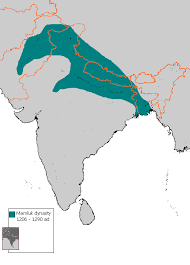
Slave Dynasty (1206-1290) -The First Delhi Sultanate (Exclude Nepal, Kashmir & Tibet from the map. First non-Hindu King of Kashmir was Shah Mir in 1349 and Nepal & Tibet remained unconquered.)
During Ala Ud Din Khilji’s(1296-1316) time, Delhi Sultanate reached it’s zenith and controlled almost the entire north India. But, it was short lived, less than a decade. From the time of Tuglaqs in the early 14th century, Rajputs again started to consolidate their powers. The Mewar reestablished their supremacy under Maharana Hammir. Hammir defeated Muhammad bin Tughlaq with Bargujars as his main allies, and captured him. Tughlaq had to pay a huge ransom and relinquish all of Mewar's lands. After this the Delhi Sultanate did not attack Chittorgarh for a few hundred years.
The Rajputs re-established their dominance, and Rajput states were established as far east as Bengal and north into the Punjab. The Tomaras established themselves at Gwalior(central India), and the ruler Man Singh Tomar built the fortress which still stands there. Mewar emerged as the leading Rajput state, and Rana Kumbha expanded his kingdom at the expense of the sultanates of Malwa and Gujarat. Kapilendra DevaorKapileshvara Deva was the emperor of Kalinga-Utkal (Orissa) and the founder of the Gajapati dynasty which annexed large swathes of territory inTelengana,Andhra, Tamil Nadu and Karnataka in the south to Madhya Pradhesh in central India and most of present day Bengal in the north. South India was, however, free from the hustle and bustle of the North under Vijayanagar Empire.
Rana Sanga of Mewar invaded many territories of the Lodis. Ibrahim Lodi fought Sanga repeatedly, only to be defeated each time, losing much of his land and Sanga's military influence came to extend within striking distance of Agra, the then the most important city of the North India.
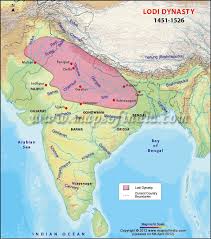
Lodi Lyansty(Afghans)- 1451-1526.The Last Delhi Sultanate at its peak before losing their territories to Rana Sanga of Mewar.
It was Rana Sanga who first invited Babur to India along with Daulat Khan against the Lodis on the theory of “Enemy’s enemy is my friend”. But, after the First Battle of Panipath, Mughals and Rajputs fell against each other due to some misconceptions and miscalculations. Taking this advantage, Afghans under Sher Shah again re-established their dominance on the Gangetic plane and drove the Mughals (Humayun) out of India.
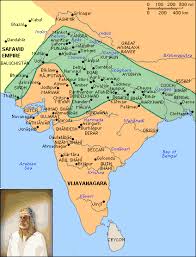
Suri Empire(1540-1556)- The Last Afghan Empire at its peak.
Akbar coming back to India in 1556 started a unique policy. He befriended the Rajputs and took a tough stand against the Afghans (probably because he did not want to repeat the same mistakes of his father Humayun). It was a high risk gamble. But, the Rajputs were chivalrous and true to their words. The same policy, more or less, continued during the reign of Jahangir and Shah Jahan. As a result, Afghans got wiped out from India and Mughal Empire gradually started to take a pan India shape.
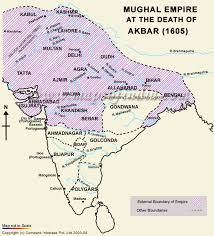
Akbar’s empire in 1605.(Autonomous Rajput states are included in Akbar’s empire)
But, this policy was discontinued by Aurangzeb in 1670s. Mughals and Rajputs again fell against each other. This decision of Aurangzeb invited the sudden collapse of the Mughal Empire within a decade or two at the hands of a new emerging power- The Marathas. Interestingly, the Marathas claimed to be from the blood line of the Rajputs (Shivaji is said to be a Sisodia Rajput. Hence, some Rajputs too even claim Shivaji as “their man” and Maratha Empire as “their empire”).
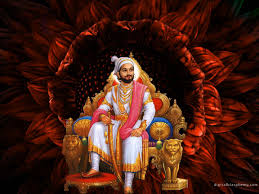
Chhatrapati Shivaji Maharaj.
@INDIC , @SarthakGanguly, and @Srinivas & Others
Slave Dynasty (1206-1290) -The First Delhi Sultanate (Exclude Nepal, Kashmir & Tibet from the map. First non-Hindu King of Kashmir was Shah Mir in 1349 and Nepal & Tibet remained unconquered.)
During Ala Ud Din Khilji’s(1296-1316) time, Delhi Sultanate reached it’s zenith and controlled almost the entire north India. But, it was short lived, less than a decade. From the time of Tuglaqs in the early 14th century, Rajputs again started to consolidate their powers. The Mewar reestablished their supremacy under Maharana Hammir. Hammir defeated Muhammad bin Tughlaq with Bargujars as his main allies, and captured him. Tughlaq had to pay a huge ransom and relinquish all of Mewar's lands. After this the Delhi Sultanate did not attack Chittorgarh for a few hundred years.
The Rajputs re-established their dominance, and Rajput states were established as far east as Bengal and north into the Punjab. The Tomaras established themselves at Gwalior(central India), and the ruler Man Singh Tomar built the fortress which still stands there. Mewar emerged as the leading Rajput state, and Rana Kumbha expanded his kingdom at the expense of the sultanates of Malwa and Gujarat. Kapilendra DevaorKapileshvara Deva was the emperor of Kalinga-Utkal (Orissa) and the founder of the Gajapati dynasty which annexed large swathes of territory inTelengana,Andhra, Tamil Nadu and Karnataka in the south to Madhya Pradhesh in central India and most of present day Bengal in the north. South India was, however, free from the hustle and bustle of the North under Vijayanagar Empire.
Rana Sanga of Mewar invaded many territories of the Lodis. Ibrahim Lodi fought Sanga repeatedly, only to be defeated each time, losing much of his land and Sanga's military influence came to extend within striking distance of Agra, the then the most important city of the North India.
Lodi Lyansty(Afghans)- 1451-1526.The Last Delhi Sultanate at its peak before losing their territories to Rana Sanga of Mewar.
It was Rana Sanga who first invited Babur to India along with Daulat Khan against the Lodis on the theory of “Enemy’s enemy is my friend”. But, after the First Battle of Panipath, Mughals and Rajputs fell against each other due to some misconceptions and miscalculations. Taking this advantage, Afghans under Sher Shah again re-established their dominance on the Gangetic plane and drove the Mughals (Humayun) out of India.
Suri Empire(1540-1556)- The Last Afghan Empire at its peak.
Akbar coming back to India in 1556 started a unique policy. He befriended the Rajputs and took a tough stand against the Afghans (probably because he did not want to repeat the same mistakes of his father Humayun). It was a high risk gamble. But, the Rajputs were chivalrous and true to their words. The same policy, more or less, continued during the reign of Jahangir and Shah Jahan. As a result, Afghans got wiped out from India and Mughal Empire gradually started to take a pan India shape.
Akbar’s empire in 1605.(Autonomous Rajput states are included in Akbar’s empire)
But, this policy was discontinued by Aurangzeb in 1670s. Mughals and Rajputs again fell against each other. This decision of Aurangzeb invited the sudden collapse of the Mughal Empire within a decade or two at the hands of a new emerging power- The Marathas. Interestingly, the Marathas claimed to be from the blood line of the Rajputs (Shivaji is said to be a Sisodia Rajput. Hence, some Rajputs too even claim Shivaji as “their man” and Maratha Empire as “their empire”).
Chhatrapati Shivaji Maharaj.
@INDIC , @SarthakGanguly, and @Srinivas & Others
Last edited:









 All battles were fought either in Haryana or in Rajasthan. In Punjab and KP, there was no resistance, only submission in the last 3000 years.
All battles were fought either in Haryana or in Rajasthan. In Punjab and KP, there was no resistance, only submission in the last 3000 years.